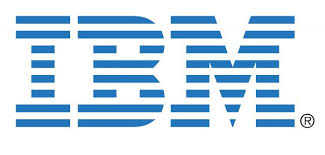Justina Nixon, Vice President & Chief Impact Officer International Business Machines Corporation (IBM)

Originally published by Investment Reports
Shortly after you assumed your role at IBM the company announced its goal of achieving net zero across all its operations by 2030. How does it feel to be at the heart of a team with such an ambitious program?
IBM has a long track record of environmental sustainability. We issued our first environmental policy over 50 years ago, and we have publicly reported on our environmental goals for over 30 years. So, we were excited to complement that previous work by announcing our net zero commitment in 2021 and then making it part of our IBM-impact strategic framework in 2022, while continuing to demonstrate and report on our progress. In June, we published our IBM-impact report addendum, which gives the public an update on where we stand regarding that goal.
On your website, you say that data can save the planet. Can you give us a walkthrough of your most interesting commitments to sustainability and explain how IBM can help its clients or partners become greener?
If you look at our portfolio, you can see that we provide innovative solutions to our clients through both our global markets and consulting arm. One example of this is our Environmental Intelligence Suite, which is an artificial intelligence-based platform that helps our clients monitor, predict, and respond to weather and climate impacts. In other words, our partners are looking to acquire data and gain insight on how to make the best decisions around questions of sustainable operations and practices. For example, through our IBM Sustainability Accelerator, we are currently working with farmers in Malawi and Costa Rica on giving them access to such information to help them make decisions on how to increase their yield, where to plant their crops, and how to optimally time irrigation.
The IBM Sustainability Accelerator, launched in 2022, is a pro bono social impact program that provides the opportunity to help vulnerable communities address environmental challenges, especially those brought on by climate change.
And so, along with a group of global partners, we were able to provide these communities with access to IBM’s Environmental Intelligence Suite, cloud platform, and expert employees to launch solutions related to sustainable agriculture, clean energy access, or water management, among others. Overall, the first cohort of the program was been designed to decrease costs for farmers, upscale digital education on water usage, carbon footprint reduction, and sustainable practices, and promote socioeconomic mobility for agricultural communities. Today, we are also doing similar work with communities to scale clean energy solutions and later this year we will start working on global water management projects.
Other climate change actors have told us that the technology available today is sufficient to reduce current emission levels by about two thirds. Do you agree with this statement? And do you think that the core issue is a lack of incentives for businesses to implement these sustainable technologies?
I am not an expert on the matter, but I do think that incentives make a difference. The Inflation Reduction Act applied in the United States, for instance, is an example of a policy that has influenced American and international companies’ decisions around the implementation of more sustainable technologies. At the same time, I believe that corporations must also be involved in the process and see the benefits of reducing their emissions, not just from an operational and business standpoint, but also in terms of the positive effects sustainable alternatives have on people and the climate.
According to a recent study we conducted, 95% of organizations have set ESG or sustainability goals, propositions, or plans, but only roughly 10% of them have made significant progress on those goals. And we believe that data poses the greatest challenge for many of these corporations. In the case of IBM, we have the expertise to help enable data collection and provide organizations with insight on viable solutions for their sustainability goals.
What other challenges, in addition to data-collection, are complicating companies’ green transition?
Another major concern is ensuring that company employees understand the benefits of a green transition and acquire the skills necessary for realizing it. IBM SkillsBuild program is designed to prepare employees in corporations, nonprofit partnerships, and governments to make data-based decisions and understand the changes involved in a just transition. So, I think that there is a gap that needs to be filled in terms of upscaling and re-skilling for any company to carry out a green transition.
What key developments in IBM and the climate change sector do you see happening in the future?
A lot more companies must start focusing on not just a green transition, but also a just transition. And many of these companies are looking at IBM-launched programs like our IBM Sustainability Accelerator, since it allows them to focus their expertise on solutions that ensure no one is left behind and no vulnerable communities are negatively impacted.
I also think that stakeholder communities, nonprofit partners, and employees will become more vocal with their demands and start shaping the landscape, especially with the advent of new regulations that require transparency on the part of companies in terms of how they report their progress on their sustainability goals.

